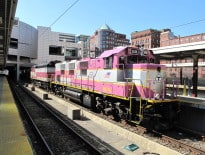There’s little dispute that the Federal Reserve this week will do something it hasn’t done since 2008, when the U.S. economy was gripped by the Great Recession: Cut its benchmark interest rate.
This time, by contrast, the economy is solid by most measures. Consumers are spending. Unemployment is close to a half-century low. A recession hardly seems imminent.
Yet the Fed under Chairman Jerome Powell has signaled that rising economic pressures – notably from President Donald Trump’s trade wars and from a global slowdown – have become cause for concern. So has an inflation rate that remains chronically below the Fed’s target level.
So the Fed has decided that a rate cut now – and possibly one or more additional cuts to follow – could help inoculate the economy against a potential downturn. The idea is that lowering its key short-term rate, which can affect consumer and business loans, could encourage borrowing and spending and energize the economy.
Wall Street has welcomed that prospect. Since the start of the year, the mood of investors has swung decisively from angst about potentially higher rates to elation over the prospect of looser credit. That has helped drive a stock market rally.
Still, skeptics wonder whether Fed rate cuts at this point would really do much to bolster an economy whose borrowing rates are already low. Some even worry that the central bank will be taking a needless risk: By cutting rates now, the Fed is disarming itself of some ammunition it would need in case the economy did slide toward a recession. Some also suggest that by driving rates ever lower, the Fed might be helping to fuel dangerous bubbles in stocks or other risky assets.
Two government reports last week – on economic growth during the April-June quarter and orders for durable manufactured goods – confirmed that the economy remains on firm footing even with pressures at home and abroad. As a result, some analysts believe the Fed may pause after Wednesday’s rate cut to see if the economic outlook further brightens before deciding on any further easing.
Other analysts foresee two or even three rate cuts this year as the Fed tries to counter global threats that risk spreading to the United States, not just prolonged trade rifts but also a potentially botched exit by Britain from the European Union, a weaker China and the risk of a recession in Europe.
Yet now, with U.S.-China trade talks back on track and signs of a resilient U.S. economy, some are wondering why the Fed is considering a rate cut. One theory is that the policymakers have so clearly signaled that a cut is coming that they must follow through on it.
Mark Zandi, chief economist at Moody’s Analytics, said he thinks that in the absence of any economic calamity, only one rate cut is likely this year. David Jones, an economist who has written books about the Fed, agrees with that forecast.
“The market is getting ahead of itself in expecting a series of rate cuts,” Jones said.
Diane Swonk, chief economist at Grant Thornton, noted that some concern has arisen that the Fed may already be fueling a bubble in stocks that could eventually burst and threaten the economy.
In the meantime, there’s little incentive to sell stocks. Indeed, “Don’t fight the Fed” is a common saying on Wall Street. To traders, it means riding stocks and other risky investments when the Fed is cutting rates and lightening up on stocks when it’s tightening. Low rates mean that bonds pay out less in interest, which makes stocks more attractive by comparison.
How much further the stock market has to go is up for debate. The last 19 times the Fed began a rate-cutting cycle in response to slowing growth, dating to the 1950s, the economy eventually slipped into recession in nearly half of them, according to Deutsche Bank. In those recessions, the S&P 500 typically dropped 27% from peak to trough.
If anything, the market rally may increase pressure on companies. Few analysts see the stock market as cheap now that investors are willing to pay so much more relative to corporate profits. For the stock market to make its next move higher, growth in profits may need to lead the way.







